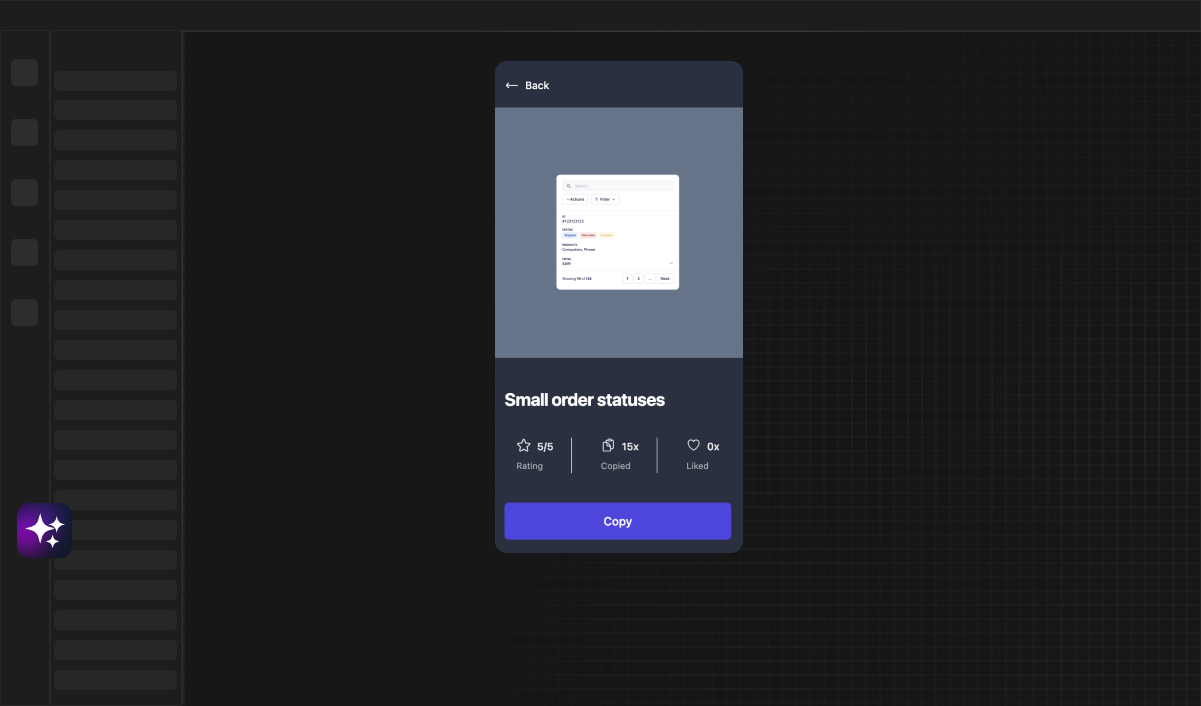
Web Developer
Exploring Container Layout Types in Bubble
Discover the intricacies of container layouts in Bubble and learn to craft seamless designs for any project. This guide covers everything from fixed to responsive containers, optimizing user experience, and ensuring high performance in your Bubble applications.
Understanding Container Layouts in Bubble
Welcome to the colorful and dynamic world of Bubble.io, where creating powerful web applications without a single line of code is not just possible, it's fun! One of the core aspects of designing in Bubble is understanding container layouts. Containers are the building blocks of your app's design, holding text, images, buttons, and more.
Now, let's dive into the basics of Bubble's visual elements, and later, we'll explore the different types of container layouts you can use to bring your visionary app to life.
The Basics of Bubble's Visual Elements
In Bubble, everything you see on the screen is part of a visual element. These elements can be anything from simple text to complex groups containing forms or interactive charts. What's fascinating is that how you organize these elements into containers can drastically affect the appearance and usability of your app.
The right container layout not only contributes to visual appeal but also enhances the practical functionality of your app. Remember, a well-structured app is more likely to engage users and keep them coming back.
Key Container Layout Types in Bubble
Bubble offers various container layouts to suit any design need. You can choose from fixed, full-width, floating, and more. Each type has its own properties and behaviors, influencing how your app will look on different devices. Understanding these layouts is crucial to designing an app that both looks great and functions smoothly, whether viewed on a desktop, tablet, or smartphone.
Now, let's explore the different container types in more detail, starting with the reliability of fixed containers.
An Overview of Fixed Containers
Fixed containers in Bubble are similar to building with bricks and mortar. They stay where you put them, providing a sense of stability in your design. These containers maintain their size and position regardless of the screen size or device.
Fixed containers excel in designs where a consistent experience is essential, and variations in screen size do not significantly affect the user's ability to interact with the app.
Advantages of Using Fixed Containers
One of the main advantages of using fixed containers is precision. You can control the exact placement of elements, which is ideal for creating interfaces with a strong emphasis on alignment and symmetry. This can be a game-changer for applications that require intricate layouts, such as dashboards or design tools.
Fixed containers also offer ease of use for beginners. When starting with Bubble, grappling with responsiveness can be overwhelming. Fixed containers allow you to get your feet wet without immediately diving into the deep end.
When to Choose Fixed Containers for Your Design
Choosing fixed containers is ideal when you're targeting a specific device or screen size. If you're making a web app primarily for desktop users, fixed containers can give you the consistency and control you need. They also work well for elements that need to remain unchanged, like navigation bars or headers.
However, fixed containers have limitations, especially when it comes to mobile responsiveness. That's where responsive containers come into play.
The Flexibility of Responsive Containers
Responsive containers are like the chameleons of the Bubble design world. They adapt to their environment, stretching and shrinking to fit different screen sizes. This means that no matter what device your users have in their hands, your app can provide an optimal experience.
Responsive design is now a standard in web development, and mastering responsive containers in Bubble can set your app apart from the rest.
How Responsive Containers Enhance User Experience
Responsive containers respond to the width of the screens on which they're displayed. They reorganize content to fit the available space, ensuring that text is legible and elements are accessible. This adaptability is crucial for catering to a mobile audience and enhancing the overall user experience.
Responsive containers make use of percent-based widths, minimum and maximum widths, and other settings that allow elements within the containers to move and scale fluidly.
Strategies for Implementing Responsive Containers
Implementing responsive containers requires an understanding of how elements will behave as the screen size changes. You'll need to consider the hierarchy of your content and how it should stack or resize on smaller devices.
Using Bubble's built-in responsive engine, you can define rules for your containers and preview how they will adjust across different screens. It's a learning curve, but the effort pays off by providing a seamless experience for all users.
Utilizing Floating Groups in Bubble
Floating groups are the free spirits of the Bubble layout universe. They break away from the constraints of the grid and can "float" at a fixed position no matter how a user scrolls. They're perfect for creating elements like sticky headers, chatbots, or custom navigation menus.
Floating groups bring an extra layer of dynamism to your layouts, offering more creative freedom in the design process.
The Role of Floating Groups in Layout Design
While fixed and responsive containers are often sufficient, floating groups come into play when you need an element to maintain its position regardless of scroll. They offer a high degree of user convenience, ensuring that key elements are always in reach.
Floating groups are versatile and can float along the top, bottom, sides, or even within specific areas of the page.
Tips for Managing Floating Groups Effectively
Managing floating groups effectively involves understanding their z-index (which controls the layering of elements on the screen) and ensuring they don't obstruct other important content. It's a delicate balance that can significantly enhance usability when done correctly.
In Bubble, you can set floating groups to appear only when certain conditions are met, providing a dynamic and context-sensitive user experience.
Leveraging Reusable Elements for Consistency
Consistency is key to good design, and reusable elements are the guardians of consistency in Bubble. These elements, once created, can be used across different pages or within the same page multiple times without needing to duplicate your work.
Reusable elements simplify the maintenance of your app by ensuring that changes are applied universally with just a single update.
Benefits of Reusable Elements in Bubble
One of the primary benefits of reusable elements is efficiency. Instead of redesigning the same layout for each new instance, you can create a master element that maintains its functionality and design wherever it's placed. This is particularly useful for items like navigation menus, footers, or custom pop-ups.
Reusable elements also streamline the testing and debugging process, as you only have to fix bugs in a single place rather than across multiple pages or instances.
Best Practices for Creating Reusable Elements
When creating reusable elements, it's best to think modularly. Craft each element as a self-contained unit that can operate independently. This approach affords you the flexibility to insert these elements into any part of your app without compatibility issues.
Also, make sure to name your reusable elements clearly and logically. This practice will save you time and confusion when your app begins to grow in complexity.
Understanding the Power of Custom States for Dynamic Layouts
Custom states in Bubble are somewhat like the secret agents of app design. They work behind the scenes, holding information that can influence the behavior and appearance of your container layouts. Essentially, they allow for dynamic interactions and content changes without the need for a page reload.
Grasping the concept of custom states can elevate your design, allowing more interaction and personalized experiences for your users.
What Are Custom States and How They Affect Layouts?
Custom states are variables that you can define to hold any piece of information, like a number, text, or even a complex list. You can use these states to trigger changes in your layout, such as showing or hiding elements, altering styles, or modifying data displayed.
This dynamic approach to design helps create more engaging and interactive applications, setting the stage for advanced features like filters, toggles, and animations.
Techniques for Using Custom States to Alter Layouts
Using custom states effectively requires planning. You'll need to determine what conditions should change the state and what the resulting effect on the layout should be. For instance, you could have a custom state that keeps track of whether a user is logged in, changing the navigation layout accordingly.
Experiment with custom states, and you'll discover an entirely new level of interaction design possibilities within Bubble.
Debugging Common Container Layout Issues
Even the most experienced Bubble designers encounter layout issues from time to time. Whether it's an element that refuses to align correctly or a responsive container behaving unpredictably, it's all part of the design process.
Becoming proficient at identifying and solving these issues is a valuable skill that will keep your app development journey smooth.
Identifying and Solving Container Layout Problems
The key to solving container layout problems is to understand the root cause. Bubble provides a responsive design mode that helps you visualize how your containers will react to different screen sizes. Pay close attention to margin settings, alignment options, and the overall structure of your containers.
Sometimes, the issue may be as simple as an incorrect setting or a misaligned element. Other times, you may need to rethink your layout approach entirely.
Resources for Troubleshooting Bubble Container Layouts
Thankfully, Bubble has a robust community and a wealth of resources to help you troubleshoot any container layout issues. From the official Bubble forum to comprehensive tutorials, you're never far from the answer you need.
Additionally, on platforms like Framify.io, you can find components and automations that simplify the process, making it easier to craft the perfect layout for your app.
Maximizing Performance with Optimized Container Layouts
Performance is an aspect that should never be overlooked in app design. Containers that are not optimized can lead to slow load times and a sluggish user experience. It's essential to balance aesthetics with efficiency to meet your users' expectations.
Performance-driven layouts consider both form and function, providing a seamless experience without compromise.
Key Considerations for Performance-Driven Layouts
To create a performance-driven layout in Bubble, you need to minimize the use of heavy elements and complex interactions that could slow down your app. Think about the essential components of your container layouts and how they contribute to the overall efficiency.
Moreover, keep an eye on how elements load and interact with each other. Reducing unnecessary complexity can make a significant difference in your app's responsiveness and speed.
Testing and Improving Container Layout Performances
Testing is crucial to ensure that your layout performs well under various conditions. Bubble offers tools to help preview and analyze your app's behavior across different devices and networks.
Make a habit of regularly testing your layouts, and be ready to iterate based on your findings. Sometimes, making small tweaks can lead to substantial performance improvements.
Case Studies: Successful Container Layouts in Popular Bubble Apps
Learning through examples is always enlightening. By analyzing successful container layouts in popular Bubble apps, you can gain insights into what works well and why.
Learning from Real-World Container Layout Implementations
Examine how these apps handle different screen sizes, user interactions, and performance challenges. Pay attention to their use of fixed, responsive, and floating containers, as well as how they leverage reusable elements and custom states.
These case studies can serve as inspiration for your own designs, showing you the potential of what can be achieved with Bubble's layout tools.
Future-Proofing Your Layout: Adapting to Bubble's Evolving Platform
Bubble is a platform that's continually evolving, bringing new features and improvements. To maintain a cutting-edge app, it's essential that your layouts can adapt to these changes.
Staying Up-to-Date with Bubble's Layout Features
Keep an eye on the latest updates from Bubble, and be proactive in exploring new layout features and enhancements. By doing so, you can ensure that your app always leverages the best design practices and remains ahead of the curve.
Preparing Your Layouts for Future Updates
To prepare your layouts for future updates, build with flexibility in mind. Use container types that can easily be adjusted and avoid over-complicating your design. This way, when new features or changes arrive, your app will be ready to embrace them.
Conclusion: Mastering Container Layouts for Professional Bubble Development
Understanding and mastering container layouts is a journey, but it's one that can lead to incredible app designs. By choosing the right container layout for each element of your app, you can ensure a delightful user experience and a professional-grade product.
Final Thoughts on Choosing the Right Container Layout
Whether you go with fixed, responsive, floating, or a combination thereof, the key is to design with the user in mind. Consider how your decisions will affect performance, usability, and overall satisfaction.
Continuing Your Journey in Bubble Design Mastery
Your journey in Bubble design mastery doesn't stop here. With platforms like Framify.io and a passion for learning, you can continually improve your skills and create apps that not only look amazing but also work flawlessly. Keep exploring, keep learning, and most importantly, keep creating!



